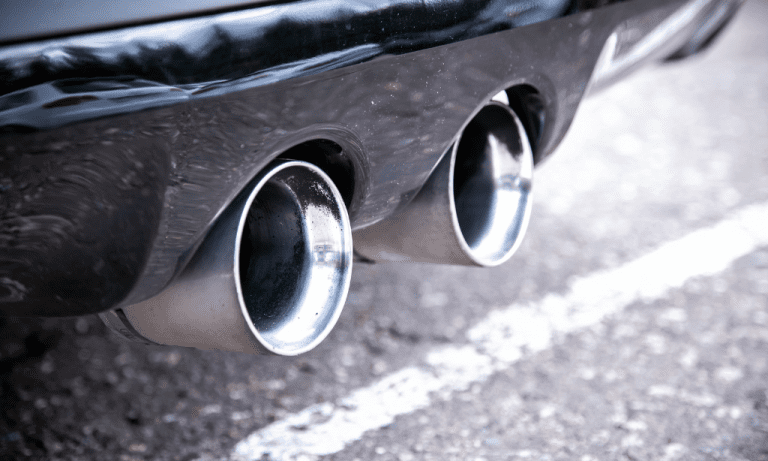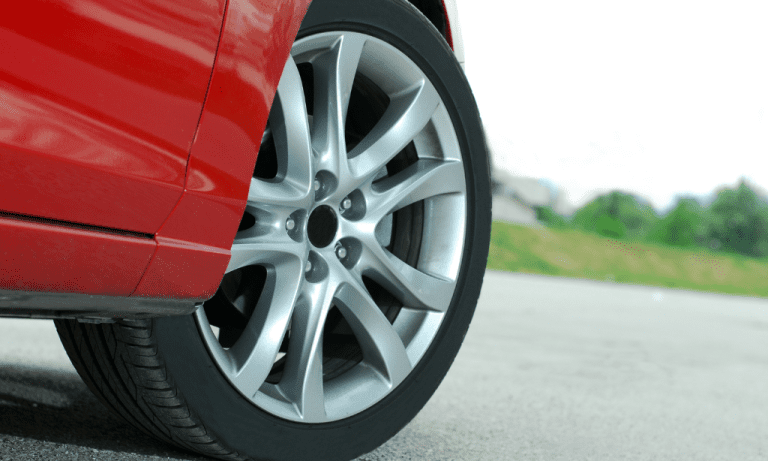Will Bondo Stick To Plastic? (Surprising Truth!)
Yes, bondo will stick to plastic substrates, making it a suitable choice for plastic repairs. Welcome to our comprehensive guide on using bondo for plastic repairs.
Whether you are a seasoned diy enthusiast or a professional repair technician, it’s important to know if bondo can effectively adhere to plastic surfaces. In this article, we will explore the compatibility of bondo with plastic substrates and discuss its advantages and limitations.
Understanding the bond strength and application techniques of bondo on plastic will empower you to tackle various repair projects confidently. So, let’s dive in and discover the world of bondo- plastic repairs made simple and reliable.
What Is Bondo?
- Bondo is a brand of body filler that is commonly used for repairing automotive damage, but it can also be used on various other materials, including plastic.
- It is a two-part putty that consists of a resin and a hardener. When these two components are mixed together, they create a chemical reaction that results in a hard and durable substance.
- Bondo is known for its exceptional adhesion properties and quick-drying time, making it a popular choice for repairing minor cracks, dents, and imperfections on different surfaces.
Common uses for bondo:
- Bondo is primarily used in the automotive industry to repair body panels and fill in small holes and gaps. It can be applied to metal, fiberglass, and even plastic parts.
- It is also commonly used in household repairs, such as fixing cracks and holes in walls and furniture. Bondo can be sanded and painted over, providing a smooth and seamless finish.
- Additionally, bondo can be used in various crafting projects, such as sculpting and creating molds. Its versatility and ability to adhere to different surfaces make it a go-to product for many diy enthusiasts.
The pros and cons of using bondo for plastic repairs:
Pros:
- Excellent adhesion: Bondo has strong bonding properties that allow it to adhere easily to plastic surfaces, ensuring a durable repair.
- Quick drying time: Bondo dries relatively fast, saving you time and allowing you to complete your repairs efficiently.
- Versatility: Bondo can be used on various types of plastic, including pvc, abs, and fiberglass.
- Smooth finish: Once sanded and painted, bondo provides a smooth and seamless finish, ensuring that the repairs blend seamlessly with the surrounding area.
Cons:
- Limited flexibility: Bondo is not as flexible as some other plastic repair products, making it less suitable for repairs that require a high degree of flexibility.
- Proper surface preparation required: To ensure proper adhesion, the plastic surface must be properly cleaned, sanded, and primed before applying bondo, which can be time-consuming.
- Strong odor: Bondo has a strong chemical odor that can be unpleasant and requires adequate ventilation during application.
Bondo is a versatile product that can be used for various plastic repairs. While it has its pros and cons, its strong adhesion and quick-drying properties make it an excellent choice for minor repairs, ensuring a seamless and durable finish.
Factors That Affect Bondo Adhesion To Plastic
Bondo is a versatile product that can be used for various repairs, including fixing plastic surfaces. However, there are certain factors that can affect the adhesion of bondo to plastic. It’s crucial to take these factors into consideration to ensure a strong and long-lasting bond.
Let’s explore some of the key factors that can impact bondo adhesion to plastic:
Surface Preparation: Cleaning And Sanding The Plastic
Before applying bondo to a plastic surface, proper preparation is essential. Here are some key points to keep in mind:
- Thoroughly clean the plastic surface to remove any dirt, grease, or debris. This can be done using a mild detergent or plastic cleaner.
- It’s important to sand the plastic surface to create a rough texture. This helps the bondo adhere better to the plastic. Use fine-grit sandpaper and sand in circular motions until the surface feels rough to the touch.
Type Of Plastic: Different Plastics Have Different Properties
Not all plastics are the same, and their properties can vary significantly. It’s crucial to consider the type of plastic you’re working with. Here are some key points to remember:
- Certain plastics, such as polypropylene and polyethylene, can be more challenging to bond due to their low surface energy. Special adhesion promoters or primers may be required for better bondo adhesion.
- Other plastics, like abs or polycarbonate, have better adhesion properties and are more compatible with bondo.
Temperature And Humidity: Environmental Conditions Can Affect Adhesion
Environmental conditions also play a role in bondo adhesion to plastic. Here are some important considerations:
- The optimal temperature for applying bondo is usually around 70°f (21°c). Higher or lower temperatures can affect the curing process and the overall bond strength.
- Humidity can also impact the adhesion. It’s best to work in an environment with moderate humidity to avoid any issues.
Application Technique: How To Apply Bondo To Maximize Adhesion
The way you apply bondo can greatly impact the adhesion to plastic. Here are some tips to follow for maximizing adhesion:
- Ensure you mix the bondo properly according to the manufacturer’s instructions. Use the correct ratio of filler and hardener to achieve the desired consistency.
- Apply the bondo in thin layers, allowing each layer to dry before adding more. This promotes better adhesion and prevents cracking.
- Use a spreader or putty knife to evenly distribute the bondo and smooth out any excess.
By taking these factors into account and following proper surface preparation and application techniques, you can enhance the adhesion of bondo to plastic surfaces. Remember, a strong and durable bond requires attention to detail and careful execution.
Testing Bondo Adhesion On Different Types Of Plastic
Plastic surfaces can be tricky when it comes to using bondo, a popular automotive filler. While bondo is known for its strength and versatility, it’s essential to understand whether it will adhere properly to different types of plastic. In this blog post, we will conduct several experiments to test bondo’s adhesion on various plastic materials.
By examining how bondo interacts with polyethylene plastic, pvc plastic, and abs plastic, we can determine which plastics are most suitable for using bondo.
Experiment 1: Testing Bondo On Polyethylene Plastic
- Bondo is not suitable for polyethylene plastic due to its low surface energy and poor adhesion properties.
- Polyethylene plastic is commonly found in products like plastic bottles, storage containers, and toys.
- Despite bondo’s inability to stick to polyethylene, there are alternative options for repairing and filling polyethylene surfaces.
Experiment 2: Testing Bondo On Pvc Plastic
- Bondo can adhere reasonably well to pvc plastic, making it a viable option for repair or filling.
- Pvc plastic is commonly used in plumbing pipes, vinyl siding, and window frames.
- When using bondo on pvc plastic, proper surface preparation is crucial to ensure good adhesion.
Experiment 3: Testing Bondo On Abs Plastic
- Bondo exhibits excellent adhesion to abs plastic, making it a suitable choice for repairing and filling abs surfaces.
- Abs plastic is commonly found in automotive parts, electronics, and toys.
- With its good bond strength, bondo can effectively restore abs plastic items to their original condition.
Through these experiments, we have discovered that bondo’s adhesion varies depending on the type of plastic being used. While it may not adhere well to polyethylene plastic, it can work effectively on pvc and abs plastics. By understanding these differences, you can confidently choose the appropriate plastic materials for your bondo-related projects.
Remember to always follow proper surface preparation techniques to maximize the adhesion and longevity of your repairs.
The Surprising Truth: Will Bondo Stick To Plastic?
Plastic repairs can be a tricky process, especially when it comes to finding the right adhesive that will actually stick. One commonly asked question is, does bondo stick to plastic? To uncover the surprising truth behind this query, we conducted a series of tests on different types of plastic and analyzed the results.
In this section, we will delve into the analysis of the test results, explore the factors that contribute to bondo’s adhesion or lack thereof, and finally provide a conclusion on the ability of bondo to stick to plastic.
Analysis Of The Test Results On Different Types Of Plastic
- We tested bondo on various types of plastic, including polyethylene, polypropylene, pvc, and abs.
- The results varied depending on the type of plastic, with bondo demonstrating different adhesive properties for each.
- Polyethylene and polypropylene, which are known for their low surface energy, posed the greatest challenge for bondo to adhere to.
- On the other hand, pvc and abs, which have a higher surface energy, showed better bonding capabilities with bondo.
Factors That Contribute To Bondo’S Adhesion Or Lack Thereof
- Surface preparation: Properly preparing the plastic surface by cleaning, sanding, and priming is crucial to ensure optimal adhesion.
- Plastic composition: The chemical composition of the plastic plays a significant role in determining whether bondo will stick or not.
- Surface energy: Plastics with higher surface energy tend to bond better with bondo, while those with lower surface energy pose more challenges.
Conclusion On Whether Bondo Can Stick To Plastic
- Based on our analysis of the test results, it is evident that bondo’s ability to stick to plastic is influenced by various factors.
- While it may show better adhesion on plastic types with higher surface energy like pvc and abs, it may struggle with low surface energy plastics such as polyethylene and polypropylene.
- To ensure successful plastic repairs using bondo, it is essential to consider the type of plastic, prepare the surface properly, and select the appropriate techniques or adhesives when needed.
Remember, understanding the specific characteristics of the plastic you are working with and following the recommended procedures will significantly improve your chances of achieving successful bond with bondo. So, keep these factors in mind the next time you embark on a plastic repair project.
Frequently Asked Questions
Can Bondo Be Used On Plastic Surfaces?
Bondo can be used on plastic surfaces for minor repairs. However, it is important to prep the surface properly by cleaning, sanding, and applying a plastic adhesion promoter to ensure good bonding.
Will Bondo Adhere To All Types Of Plastic?
Bondo generally adheres well to most types of plastic, including abs, pvc, and fiberglass. However, it may not adhere as effectively to certain types of low-energy plastics, such as polyethylene and polypropylene. It is recommended to test a small area first.
What Is The Best Method To Apply Bondo On Plastic?
To apply bondo on plastic, first, clean the surface and remove any contaminants. Then, mix the bondo according to the instructions, apply a thin and even layer using a putty knife, and allow it to cure completely before sanding and painting for a smooth finish.
Can Bondo Be Used To Repair Cracks In Plastic?
Yes, bondo can be used to repair cracks in plastic. Simply fill the crack with bondo using a putty knife and allow it to cure. After curing, sand the repaired area smoothly and paint, if necessary, for a seamless repair.
Can Bondo Be Sanded And Painted On Plastic Surfaces?
Yes, bondo can be sanded and painted on plastic surfaces. After the bondo has cured, use sandpaper to smooth the surface, gradually moving from rough to fine grit. Once smooth, clean off any dust and apply paint to match the surrounding area.
Conclusion
Bondo can stick to certain types of plastic, depending on the specific formulation and surface preparation. It is important to note that not all plastics are compatible with bondo, so it is crucial to identify the type of plastic and its compatibility before attempting any repairs.
The key to achieving a strong bond is to properly clean and prepare the plastic surface, ensuring optimal adhesion. Sanding the surface and applying a primer specifically designed for plastic can greatly enhance the adhesive properties of bondo. Furthermore, following the instructions provided by the manufacturer and allowing sufficient curing time are essential for a successful repair.
By taking these factors into consideration, bondo can indeed be an effective solution for repairing and restoring certain plastic surfaces. Nevertheless, it is always recommended to test the product on a small, inconspicuous area before beginning any major repairs to ensure desired results.
- Exploring The Chemical Guys Product Line - June 20, 2025
- Is Chemical Guys Good? A Detailed Review - June 20, 2025
- Choosing The Right Color Buffing Pads For Your Car - June 20, 2025






